39 lemon battery experiment for kids
Lemon Battery Experiment for Kids. Instructor: Amanda Robb Show bio. Amanda has taught high school science for over 10 years. They have a Master's Degree in Cellular and Molecular Physiology from ... Nov 18, 2017 - This lemon battery experiment is a perfect activity to get our girls excited about exploring STEM. With only a few materials you can light up an LED bulb...
Just being able to experiment with items like copper wires and alligator clips is a cool thing for kids. Also included in the kit is a digital clock that can be inserted into the lemon and powered. Our next experiment is to see how many hours one lemon will actually power the clock!

Lemon battery experiment for kids
Lemon experiment Now roll the lemons on a hard surface, being careful not to break the skin. The reason we do this is it will loosen the pulp, make the lemons juicy and help the electrons move through the lemons. Cut a slit in each lemon just large enough to insert the pennies. Insert the penny connected to the wire in teh slit you made. 15 lemons 45 copper pennies 120 1.25 inch zinc/ galvanized nails 8 alligator clips with the wire attached Multimeter Method Gently roll one of the lemons so that the juices start flowing. Make sure to not rip the skin. Make two incisions two inches apart on the lemons. Insert 3 copper pennies in one of the slots. Exploration of conductive materials What You Need 2 large lemons or other citrus fruits 3 copper wires, approximately 1' long each 2 copper pennies or copper nails 2 large galvanized zinc nails (at least 2" long) Battery-powered clock (one that uses a single battery, and does not also have an outlet cord)
Lemon battery experiment for kids. Try this fun lemon science experiment with your kids to teach kids about electrical circuits! How to Make a Battery from Lemons. Here’s how you can make your own homemade lemon battery that’s strong enough to light a bulb. This fun lemon battery science fair experiment creates what is called a wet cell battery; normal batteries are dry cells. A lemon battery My experiment is basically making a lemon battery and seeing if it can power a light. A battery consists of one or more electrochemical cells that convert stored chemical energy into electricity. Each contains a positive side ( Cathode) and a negative side (Anode). Electrolytes ( Acidic lemon juice) allows ions to move between the The lemon battery experiment is one of the common experiments mentioned in science textbooks. A lemon battery consists of two metals suspended in an acidic solution. Copper and Zinc work well as metals for the battery and the citric acid present in the lemon act as an acidic solution. A fresh, large, juicy lemon A galvanized nail, so that its coated in zinc A copper coin 4 Steps to Make a Lemon Battery Make a cut on one side of the lemon. Push the coin inside. Like this, make another cut on the other side of the lemon. Push the nail inside, but make sure the nail and the coin don't touch. Voila! This is a single cell battery.
Fruit Battery - An Easy Science of Electricity Activity for Kids. The Lemon Battery experiment is a wonderful example. While you can put these activities together with various items around your home, there is a kit that you can purchase online at an extremely reasonable price. Review all the lemon science experiments that were completed. Lemon science extensions: In addition, children could also use lemon juice for disappearing ink, apple slices, and non-edible fizzy bubbles (made with dish detergent, lemon juice, and baking soda). Tomato Battery Experiment All you need to try this fun fruit battery experiment are a few simple materials: heavy copper wire (with or without plastic coating) wire cutters or heavy scissors 6 tomatoes 6 nails or large paper clips 1 LED light bulb (like from string of Christmas lights) electrical tape Electricity from Tomatoes Jun 20, 2019 - Build a fully functional lemon battery and use it to learn about electricity as you power a light bulb in this science experiment for kids.
The lemon battery is one of the most popular science experiments for kids. It features in Episode 2: B is for Battery of Circuit Playground by LadyAda from AdaFruit Industries. When my kids watched this episode they of course wanted to make a lemon battery. It's a quick and fun experiment to do and kids can get really involved with it. Lemon Battery Science Experiment The first step is to roll the lemons. Just like you would if you were about to eat or juice them. This releases the juices inside and we want our lemons as juicy as possible. Start with one lemon and make a small cut through the peel on either end. Hank shows us another SciShow: Experiment! This time he's tackling what may be the most cliche, well-known and misunderstood experiment of all time: the lemo... Insert the copper wire by 1 inch into the lemon. After ensuring that your tongue is moist with saliva, touch it to the copper wire. Make an observation regarding what you feel. Insert the paper clip, zinc strip or nail into the lemon keeping a distance of ¼th inch from the first insertion point.
Using the 'Lemon Light Experiment', kids can create a direct current battery from Lemon. It is suitable for home-schoolers and elementary learners. Making of Lemon Battery Materials Required 1) 3 Fresh Lemons (The more lemons you use, the more power or electricity you can create) 2) LED bulbs
The lemon battery you made is a type of battery called a voltaic battery. These types of batteries are made of two different metals, which act as electrodes, or places where electrons can enter or leave a battery. In your case, the electrical current entered your tongue, which is why you felt a tingle.
Fruit Battery Light Diode Science Kit Orange Potato Lemon Battery Physics Teaching Experiment by AdvancedShop. 4.1 out of 5 stars. 142. Save 13%. $6.95. $6. . 95 ($6.95/100 g) $7.95.
1 Wash the coins thoroughly and dry them. 2 Roll the lemon or orange across a bench, pushing down to 'juice' the lemon. 3 Ask an adult to carefully cut two small slits in the rind, fairly close together. Place the coins into the slits, making sure they don't touch each other. 4 Try measuring the current created in the circuit using a multimeter.
The lemon battery project requires almost no advance setup. Just gather the above material, strip the insulation off the wire and use the sand paper on the wire and nail ends just before performing the experiment. Project Lightly sand the end of the wire and nail.
Jul 21, 2021 · In this amazign lemon battery your children will use a couple simple materials to make a lemon powered light. This lemon battery experiment is perfect for kindergarten, first grade, 2nd grade, 3rd grade, 4th grade, 5th grade, and 6th grade students to explore creating a circuit. Except in this case, we will get our electricity from lemon power!
Hello everyone!Today's topic is Potato/Lemon battery experiment. In this experiment chemical energy is converted into electrical energy. Potatoes create an e...
Hands-on Chemistry Activities Build a Lemon Battery, At-Home, Page 1 . Build a Lemon Battery At-Home . A lemon on its own is not a battery. But add electrodes, make a path for electrons to move, and you have all the basic elements of a battery. Build your own lemon battery and feel energized when you juice up a small LED with electricity!
Lemon Battery The first experiment involves making a battery from lemons. Yes, lemons! Lemon juice is acidic, filled with acetic (or citric) acid, with a few other acidic compounds thrown in. It happens to make a viable electrolyte. We need two dissimilar (not the same) metals as well. For this, we need copper and zinc. ADDITIONAL Parts Required:
Exploration of conductive materials What You Need 2 large lemons or other citrus fruits 3 copper wires, approximately 1' long each 2 copper pennies or copper nails 2 large galvanized zinc nails (at least 2" long) Battery-powered clock (one that uses a single battery, and does not also have an outlet cord)
15 lemons 45 copper pennies 120 1.25 inch zinc/ galvanized nails 8 alligator clips with the wire attached Multimeter Method Gently roll one of the lemons so that the juices start flowing. Make sure to not rip the skin. Make two incisions two inches apart on the lemons. Insert 3 copper pennies in one of the slots.
Lemon experiment Now roll the lemons on a hard surface, being careful not to break the skin. The reason we do this is it will loosen the pulp, make the lemons juicy and help the electrons move through the lemons. Cut a slit in each lemon just large enough to insert the pennies. Insert the penny connected to the wire in teh slit you made.
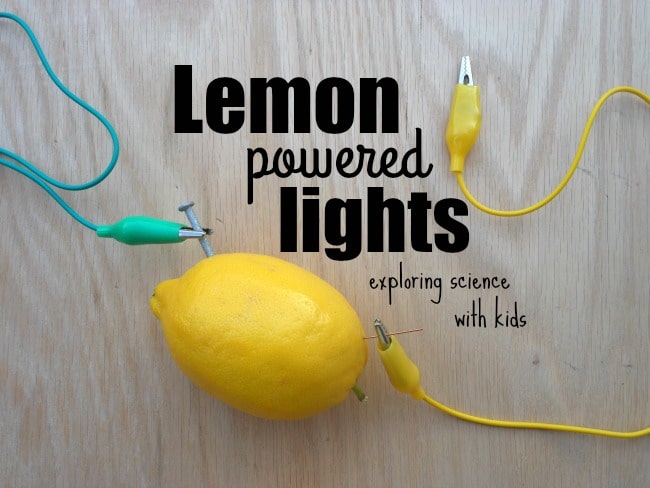

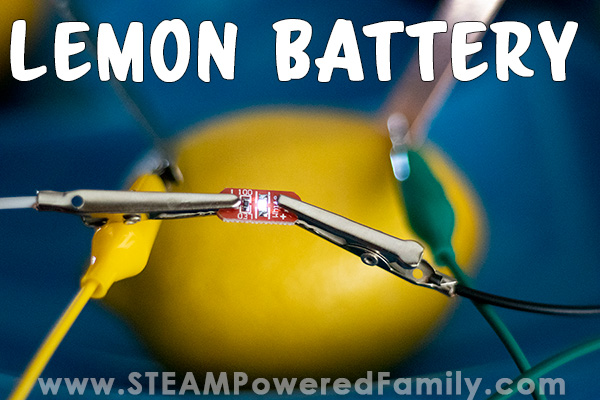








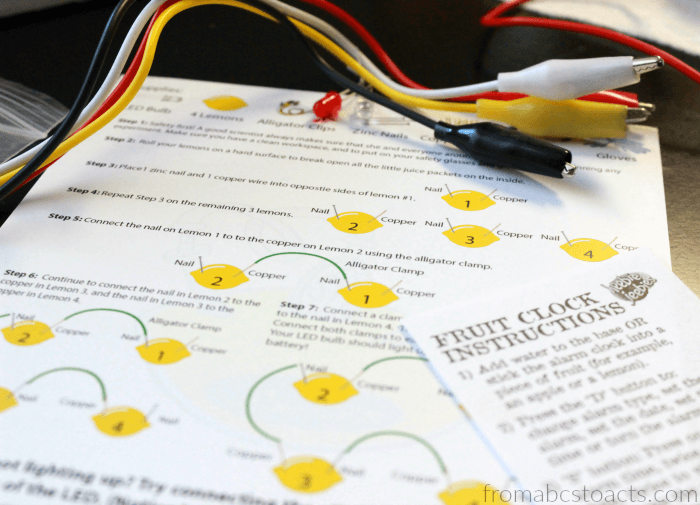


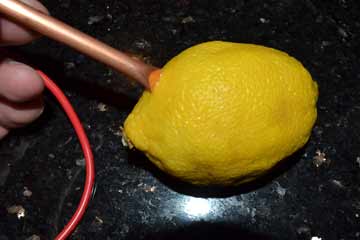





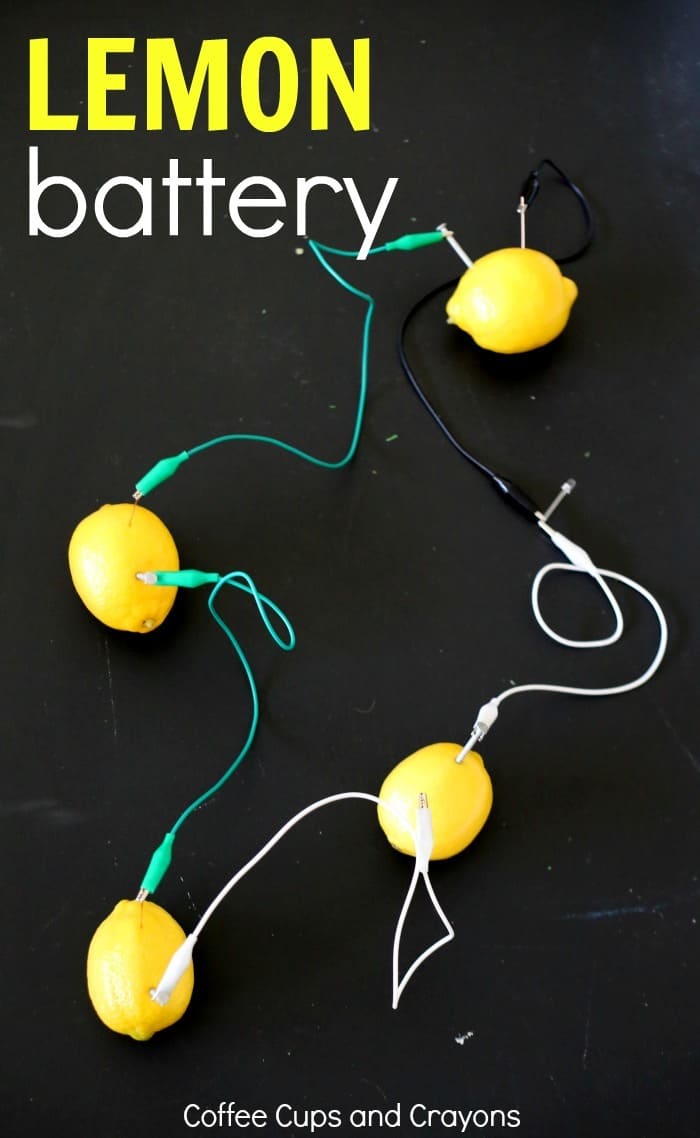

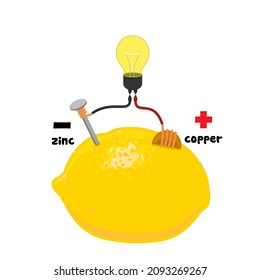

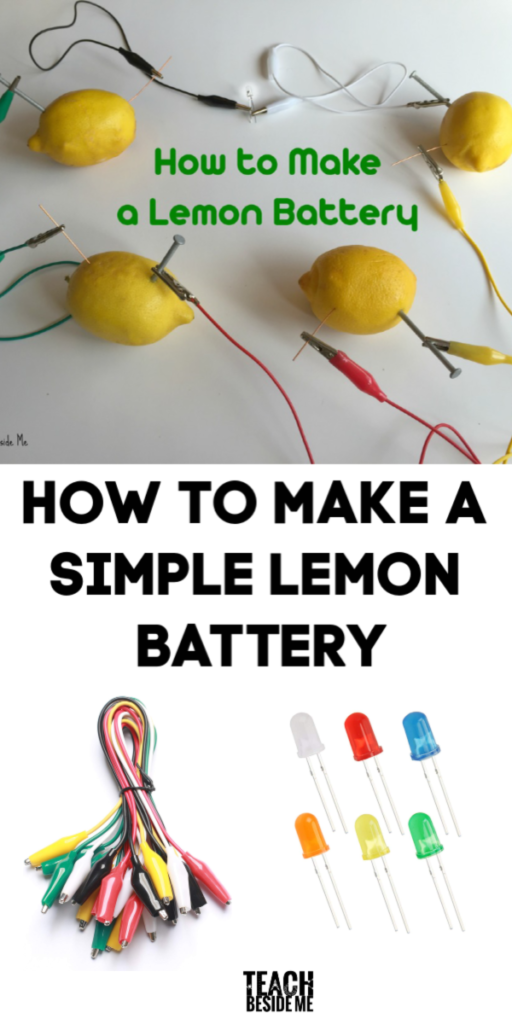
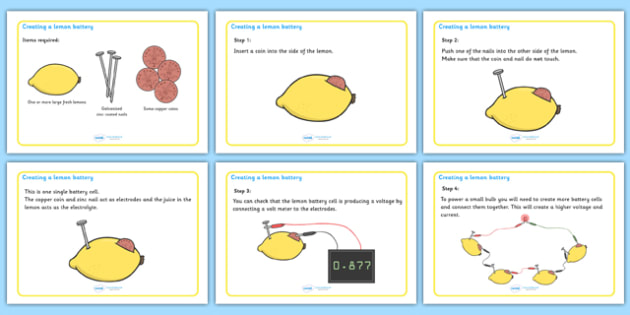







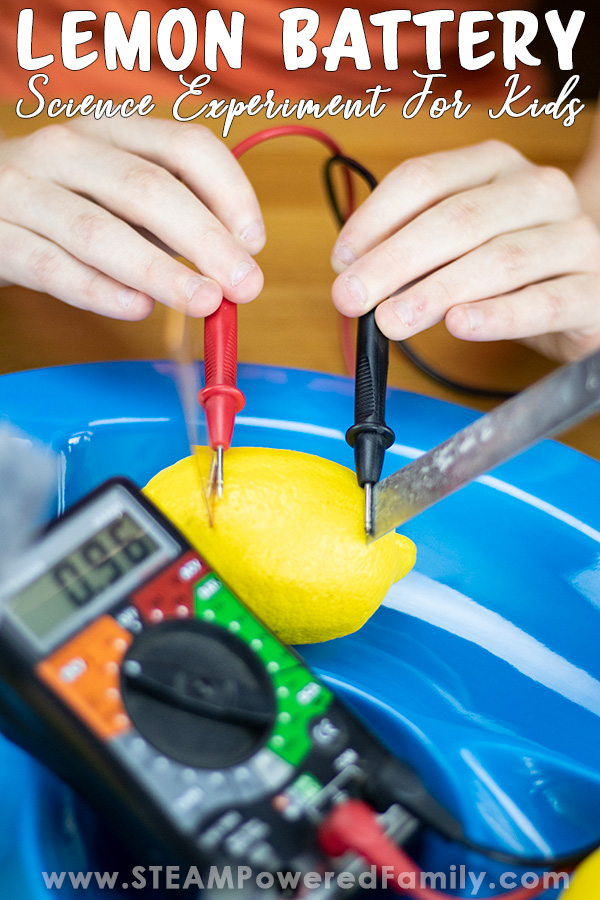


0 Response to "39 lemon battery experiment for kids"
Post a Comment